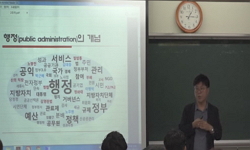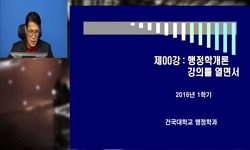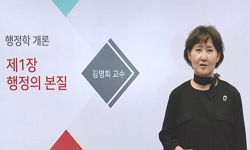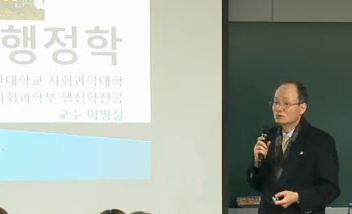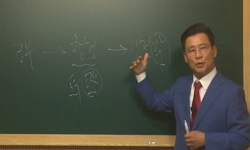Ⅰ. Introduction This thesis has a purpose to research on the public transportation policy formation process. The factors that can be feasibility to transports is roads. The road is an instrument to make intermediates peoples face to face in one's l...
http://chineseinput.net/에서 pinyin(병음)방식으로 중국어를 변환할 수 있습니다.
변환된 중국어를 복사하여 사용하시면 됩니다.
- 中文 을 입력하시려면 zhongwen을 입력하시고 space를누르시면됩니다.
- 北京 을 입력하시려면 beijing을 입력하시고 space를 누르시면 됩니다.
https://www.riss.kr/link?id=T9385849
- 저자
-
발행사항
대전: 大田大學校, 2004
-
학위논문사항
학위논문(박사) -- 대전대학교 대학원 , 행정학과 지방자치전공 , 2004
-
발행연도
2004
-
작성언어
한국어
- 주제어
-
KDC
326.34 판사항(4)
-
DDC
385.1 판사항(21)
-
발행국(도시)
대전
-
형태사항
v, 177p.; 26cm
- 소장기관
-
0
상세조회 -
0
다운로드
부가정보
다국어 초록 (Multilingual Abstract)
Ⅰ. Introduction
This thesis has a purpose to research on the public transportation policy formation process. The factors that can be feasibility to transports is roads. The road is an instrument to make intermediates peoples face to face in one's life. In other words, the roads is an instrument meet peoples each others, and can get oneself to desire. Therefore, we can think that road is one of the very important things in our life.
According to increase people's income, also increase people's desire to get their automobile ownership. But it can be not to dependent on peoples automobile ownership for city transportation system. Because increase people's automobile ownership will bring to an extreme state of congestion with traffic.
In these situation, public transport policy comes to as the core policy problems in city transportation system. And then, public transportation policy formation has complex process which to participate formal participants and informal participants like as diversity interest groups, individuals, mass media and rural politics.
This thesis inquires about public transportation policy formation. For this, applies to empirical study that is city railroad construction policy formation.
Ⅱ. Theoretical Backgrounds
In order to analysis of public transportation policy formation, researcher is going to apply with various policy-making model. Basically policy-making models are divided into several types. Criteria of dividing into several types is rationality. There are 4 types model relying on rationality.
1) Rational comprehensive model
Rational comprehensive model reflects rationality carefully. It premised perfect analysis of situation on rasing policy problem. But it is almost impossible, unless analysist has a man of ability about cognitive a certain status quo.
2) Satisfying model
Satisfying model begins with problem oriented that perfect analysis is very difficult for peoples to actualization.
Response to comprehensive rationality is to determine in level of satisfying of decision maker. But satisfying model can not reflect to rationality in decision making of real world. Because satisfying level of decision maker can be meant to arbitrary behavior.
3) Optimal model
Optimal model originated by Yehezkel Dror. His concept of optimal model increase to more realize rationality in policy making stage. For more increase rationality, he asserted that policy maker seeks values positively. What is more, extra-rationality should be considered. But optimal model does not guaranteed tangible methods for seeking values.
4) Incremental model
Basically incremental model premises that peoples are restricted beings in their cognitive ability, their time scopes and their finances. So, incremental model asserted that policy making process is like "muddling through". This means policy maker is dependanted upon various restricted factors According to incremental model, policy maker seeks values is very difficult in policy making process in real world. Therefore alternative is that policy make is determined by incremental method that is , step by step or little by little. But policies be determined by incremental model can not give chance to change and innovation.
5) Mixed-Scanning model
Mixed-Scanning model compromises with between rational comprehensive model and incremental model. It is very useful model. And then in this model, it is necessary for initiative groups such as social guidance system that leads two points of view.
6) Garbage can model
Garbage can model is useful thing that can be adopted in extream confused situation. Its keynotes can not be guranteed rationality. According to this model, policy making is determined by trigger effects in a certain situation.
Ⅲ. Analytical Framework
In order to analysis of public transportation policy formation, we have to investigate various theoretical model on policy making formation. Public transportation policy formation basically have two variables as a criteria. That is efficiency and equity. On the authority of theoretical studying untill now, can be proposed to analytical frame work.
◁그림 삽입▷(원문을 참조하세요)
Ⅳ. Empirical analysis
On the authority of analytical framework, I analysis city railroad (subway) construction policy in Daejeon city.
1) Define policy problem & establish policy goal
The defines of policy problems about public transit problem initiatives presidential candidates of participated in 1987 presidential election. This means defining policy problem has been dominated by non-rationality that is political characteristic rather than rationality.
2) Seek alternatives
Seeking alternatives stage was neglected. Because city railroad policy was initiatives by presidential candidate and presidential candidate who asserted city railroad policy wins in presidential election.
3) Analysis alternatives
Analysis process on alternatives was very simple. Because policy goal was given by president, analysis alternative was not important. Rather, more important thing concreted implementation process of city railroad policy.
4) Collect opinion & Hearing, policy change
Collect opinions & hearing is very important process in policy formation stage. Collect opinion & hearing in city railroad policy is mainly focuses on course setting of railroad. Effect of collect opinion came out course change of railroad.
5) Adopt alternative
Because seeking and analyzing process on alternatives was restricted, alternatives adopt stage was very simple.
Ⅴ. Conclusion
Public transportation policy making has to be determined in composing of basic city meta policy. In public transportation policy formation, I think that the important thing of criteria harmonized between physical perspectives of city future and image of city. In these point, I propose several policy problems in public transportation policy.
First, I asserted mixed-scanning model applying, instead of garbage can model in city transit policy formation process.
Second, policy formation and making ability of formal participants have to be increased in city government.
Third, take part in informal participants has to be expanded. I truly think that these proposed assertions will increase rationality of policy formation process in city government.
목차 (Table of Contents)
- 목차 = ⅰ
- 제1장 서론 = 1
- 제1절 연구 목적 = 1
- 제2절 연구 범위와 방법 = 4
- 제2장 도시교통정책의 이론적 검토 = 6
- 목차 = ⅰ
- 제1장 서론 = 1
- 제1절 연구 목적 = 1
- 제2절 연구 범위와 방법 = 4
- 제2장 도시교통정책의 이론적 검토 = 6
- 제1절 대중교통정책형성 이론 = 6
- 1. 대중교통의 개념 = 6
- 2. 대중교통의 문제 및 교통정책 = 13
- 3) 대중교통정책형성 이론 = 22
- 제2절 대중교통정책 형성체계의 분석 = 55
- 1. 도시교통정책의 구성요소 = 55
- 2. 도시교통정책형성의 준거기준 = 61
- 3. 도시교통정책형성의 네트웍분석 = 68
- 4. 도시교통정책형성 모형 = 74
- 제3장 대전광역시 도시철도사업 결정과정의 경험적 분석 = 79
- 제1절 대전광역시 대중교통체계의 결정 = 80
- 1. 문제의 제기 및 필요성 = 80
- 2. 대중교통체계의 기본정책형성 구조 = 81
- 3. 대중교통체계의 기본정책결정 = 86
- 제2절 도시철도사업의 구체화 과정 = 87
- 1. 사업의 개요 = 87
- 2. 정책목표의 설정과정 = 89
- 3. 정책대안의 설정과정 = 92
- 4. 정책대안의 비교 및 분석과정 = 98
- 5. 정책대안의 채택 = 102
- 제3절 실증적 조사분석 = 105
- 1. 조사연구의 설계 = 105
- 2. 조사연구의 결과 = 112
- 3. 결과의 분석 및 논의 = 149
- 제4장 결론 = 157
- 제1절 요약 = 157
- 제2절 정책 제언 = 160
- 참고문헌 = 162
- <설문지> = 168
- Abstract = 173




